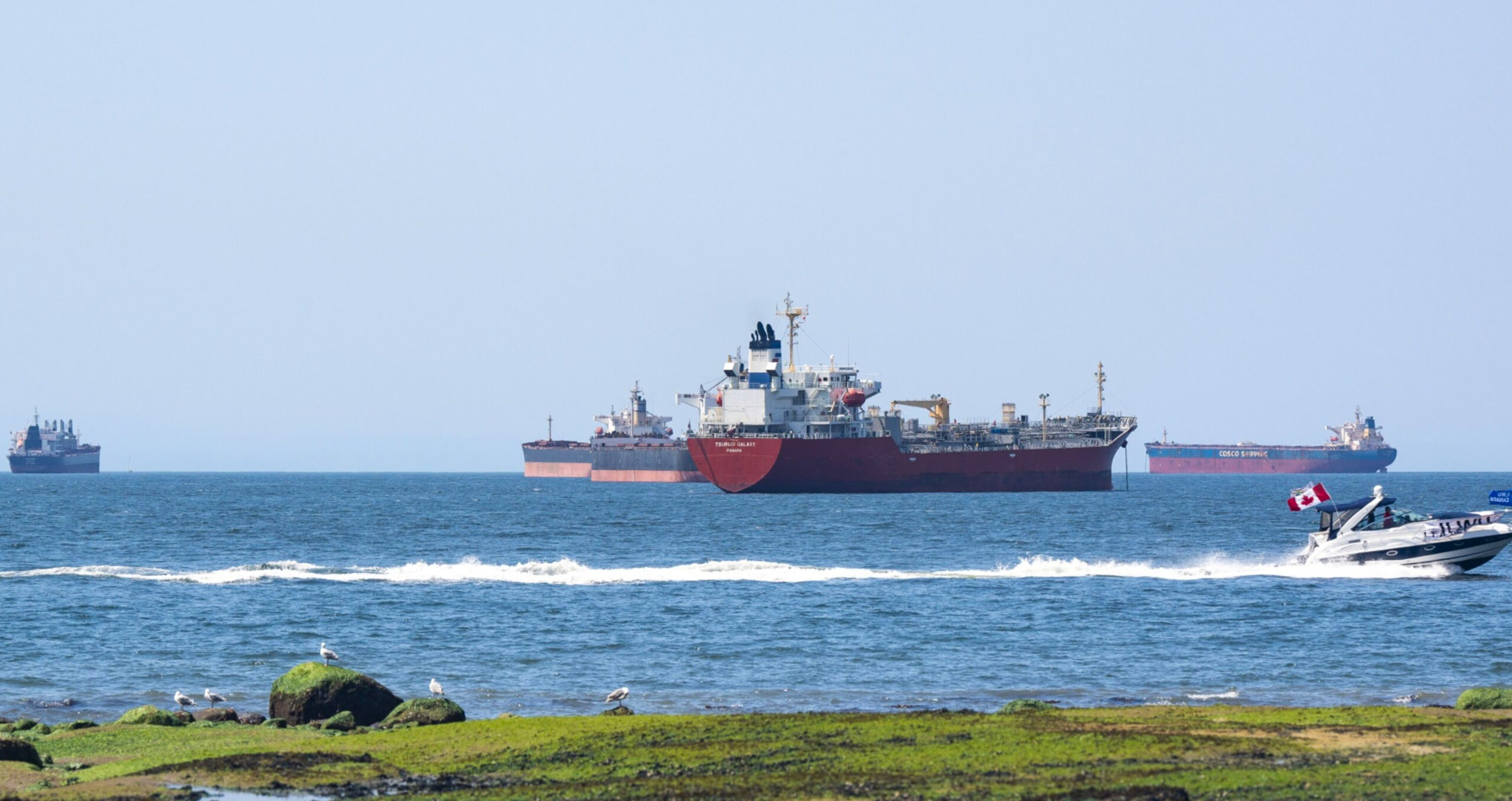
How does the shipping industry plan to decarbonise?

The IMO’s agreed emissions reduction targets signal progress in an industry that has engaged very little with the need to decarbonise. However, the targets are not aligned with the Paris Agreement and would not cut emissions to the levels that scientists say are necessary to avoid the worst impacts of climate change.
After a tense week of discussions, delegates of the 175 countries comprising the UN International Maritime Organization adopted a revised strategy to help decarbonise the shipping sector.
Under the agreed terms, countries have committed to reduce total annual greenhouse gas emissions from international shipping based on “indicative checkpoints”. The initial “checkpoints” mean emissions cuts of at least 20 per cent – striving for 30 per cent – by 2030; followed by a reduction of at least 70 per cent – striving for 80 per cent – by 2040, both in comparison to 2008 levels.
The “striving” targets were each increased by five per cent after a push by the Pacific Island nations to boost the strategy’s ambition in the final day of negotiations.
“This outcome owes so much to the leadership of a small number of climate-vulnerable countries – to their determination and perseverance in convincing much larger economies to act more ambitiously and overcome their concerns, for all of our benefit,” said Tristan Smith, a reader at University College London’s Energy Institute.
Despite countries reaching an agreement that moves the needle from the IMO’s 2018 strategy – which contained no short or medium-term targets and aimed only to halve emissions by 2050 – it is not aligned with the Paris Agreement 1.5C goal.
Climate activists criticised the omission of science-based targets and condemned the “closed door” nature of the negotiations. Only a restricted number of observers were allowed inside the negotiations, and the non-profit Clean Shipping Coalition expressed in a statement its “serious concerns” over the lack of media and wider stakeholder scrutiny.
Future policy measures
Countries also formulated a vaguer pledge to reach net zero emissions “by or around, ie, close to 2050”, with leeway for countries’ different circumstances, as previously reported by Sustainable Views.
Allan Lilia, deputy secretary at the Solomon Islands’ ministry of infrastructure development, called for the focus to “shift from target setting to target delivery”. Indeed, the technical and economic measures needed to abate the shipping sector’s emissions were also at the heart of the IMO discussions.
One of the main economic measures under discussion was a shipping levy. As Sustainable Views revealed, despite fierce initial disagreement, member states reached a provisional understanding on the concept, though its format and structure are yet to be determined.
The most contentious aspects to be resolved relate to the price level at which a levy would operate, and how the raised revenues would be spent. Various proposals are now undergoing an impact assessment, with potential adoption of the measure scheduled for spring 2025 and a levy coming into force in 2027 at the earliest.
“We in the Pacific are going to keep up a strong fight for a levy that gets us to zero emissions by 2050,” said Ralph Regenvanu, Vanuatu’s minister of climate change adaptation, who favours a levy starting at $100 a tonne of CO₂.
The final agreement mentions the development of a fuel standard to regulate the phased reduction of marine fuels’ greenhouse gas intensity as a technical element, and the creation of a maritime greenhouse gas emissions pricing mechanism as an economic element.
The revised strategy also includes the goal of reaching at least 5 per cent (striving for 10 per cent) of zero or “near-zero” greenhouse gas fuels, by 2030. The development of low-carbon shipping fuels requires immediate investment and targeted regional policies to lower the cost and risks involved in scaling up a technology, say the Energy Institute’s Smith and his colleague Alison Shaw, a research fellow.
“Corporate first movers must launch green shipping corridors to accelerate the uptake of zero-carbon fuels, and the IMO must follow up this decision with policy measures on efficiency, carbon pricing and fuel standards to mandate the transition away from fossil-fuelled ships,” said Jason Anderson, senior programme director at non-profit ClimateWorks Foundation.
IMO secretary-general Kitack Lim described the overall emissions reduction agreement as not the “end goal” but “a starting point for the work that needs to intensify even more over the years and decades ahead of us”.
Similar Articles

In Brief: EU parliament rubber-stamps CSDDD; US imposes strict rules on carbon pollution from power plants

UK Climate Change Act remains legally sound 15 years on, experts say


